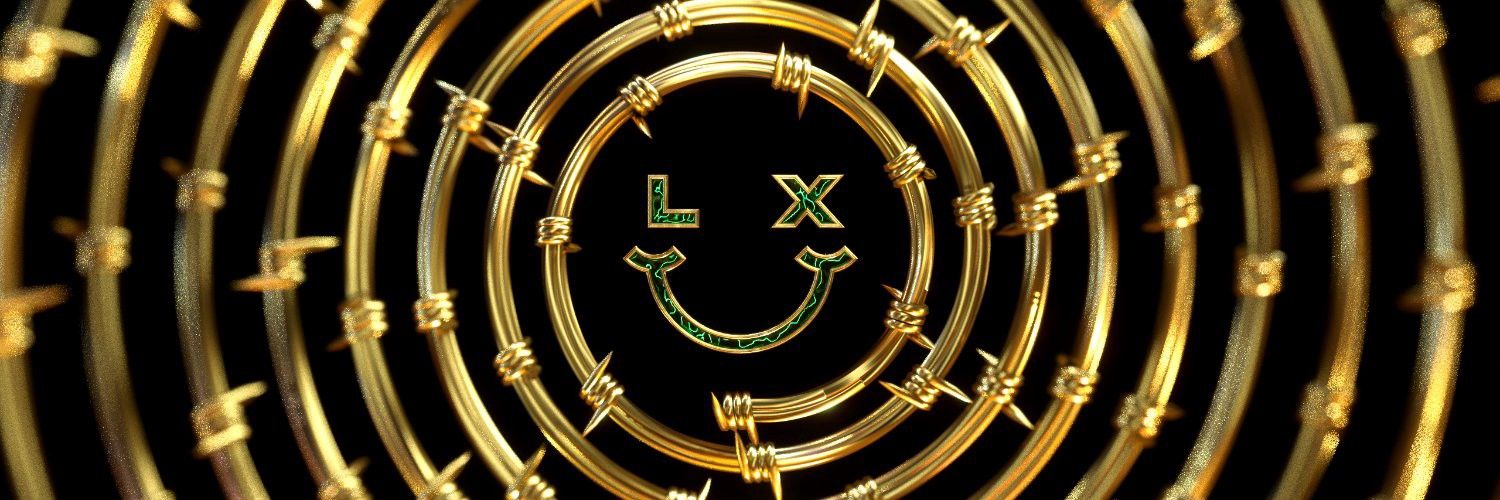5 Tips for Emerging NFT Artists from Lux Expression, The Industry’s Niftiest Card Issuer
A couple of weeks ago, we had the pleasure to host a Clubhouse session featuring Lux Expression, an NFT artist whose Lux Cards collection…

A couple of weeks ago, we had the pleasure to host a Clubhouse session featuring Lux Expression, an NFT artist whose Lux Cards collection has recently passed 310 ETH (over half a million US dollars at the time of publication) in market cap. The latest series of his glossy, mesmerising 3D cards that naturally had a chameleon sitting on top of each one — an homage to a popular cryptocurrency ranking website — sold out in about 30 seconds.
Lux Expression entered the NFT world in late 2020, settling in quickly. Combining his creative vision and marketing know-how (10 years of experience in the design industry have surely played their part), the pseudonymous creator has crafted his formidable and easily recognizable brand (alongside an active Lux community) in just a matter of months.
It only made sense, therefore, to ask Lux Expression to share his experience of creating successful NFT collections, promoting art and building meaningful relationships with collectors. So whether you’re a budding NFT artist considering going full-time, or someone who is about to mint their first work, here are five tips that might help you to get a better understanding of the burgeoning NFT market.
1. Be Unique and Memorable
“Your art must grab your audience’s attention immediately,” Lux Expression stressed at the very beginning of our Clubhouse session. “There is a lot of noise on NFT marketplaces, and even the most talented artists can get behind if their work doesn’t catch an eye right away.”
Indeed — even the most talented or technically proficient artists can go unnoticed, given that the NFT market is highly saturated. Luckily, that’s something that can be dealt with.
The building blocks of every art collection are the art pieces themselves, so make sure that they are unique. Be it through incorporating some eye-catching visual elements or even music, the important thing is to make sure your work is novel or stands out in some kind of way.
The peripheral elements of your NFT are highly important as well, as they can also make it more distinguishable from the masses. These mainly include your piece’s name and description.
“The name of your NFT, the description or any surrounding element that goes alongside when you are presenting it are incredibly important,” Lux Expression noted. “All of that can add to the collectible’s value — or, likewise, it can even decrease it.”
Finally, consistency is key. A quick scroll through Rarible would show you that artists who use similar color palettes and design elements are the ones who really stand out. While marketing does help, your work ultimately needs to be able to sell itself.
2. Engage With Your Audience
Think of each work or collection as a dialogue between you and your audience. People tend to collect art that resonates with them, so the message that runs through your works might play a crucial role, ultimately convincing your buyers to make the purchase.
“Ideally, you want to manifest an emotional response of your audience,” the artist said when asked about it. “With Lux, I put a lot of effort into the branding side of things, communicating to my collectors what I value as an artist and as a person”.
“There is something that’s called mnemonic devices where you can utilize language in a way that triggers an emotional, memorable response,” he added, stressing once again the importance of a work’s name and description.
Another way that could help trigger an emotional response from your audience is to reference real events and experiences with your art. In Lux Expression’s case, that was to reflect on major industry milestones such as PayPal entering the crypto space with some of his Lux Cards series. Embedding a piece of history into the art itself helped the artist to add to the collectability of his NFTs.
3. Know How to Market Yourself On Social Media
Social media is your friend. Using Twitter, Instagram, Pinterest, Discord, Reddit, Telegram (and even Clubhouse now!) can help you gain more exposure for your works.
During the Q&A session, Lux Expression remembered his early days in the industry. At the time, he studied some artists who seemed talented, but weren’t getting much traction. He soon realized that social media was their main point of failure. “It became apparent to me that there were not many people who knew how to [manage their social media] correctly,” he recalled, adding that there are many useful guides on that available online.
If you’re looking for some inspiration, you can take a leaf out of Lux Expression’s book. One of the first functionalities he built into the Lux ecosystem was a virtual gallery in CryptoVoxels, called “Lux Vault”. Members of the Lux community can send their NFT to the vault and, if approved by the community, the piece gets published on Lux Expression’s Twitter account and showcased in the gallery, which gives them a major boost and helps to secure first sales.
4. Immerse Yourself in NFT
NFTs have a steep learning curve, which is symptomatic of such a cutting edge concept. One of the best ways to learn about it is to get yourself immersed in the community — luckily, there are loads of people willing to guide you through the blockchain maze. “Being very active on communications platforms like Discord was very helpful for me early on — actually, Rarible Discord is very active and there are a lot of collectors on there,” Lux Expression said, adding:
“It’s a very interesting route we are all taking, and I think there will be a lot more utility and functionality for NFTs in the future. These are still early days. Rarible, OpenSea and such platforms are the first to open the door and show the light.”
5. Be Humble
If you are getting started in the NFT space, be humble and disciplined. You might have heard quite a few rags-to-riches stories about people making a fortune on collectibles, but remember that being a successful NFT artist or trader requires skills, knowledge and persistence above all else.
“If you’ve joined recently, don’t overprice your work,” Lux Expression said, highlighting that he released his first Lux Cards — which take a lot of artistic and rendering skills — for just five dollars per piece:
“Reward those who take a leap of faith and engage with your collectibles. As artists, we must understand that we are essentially working for people who believe in us and our collections.”

